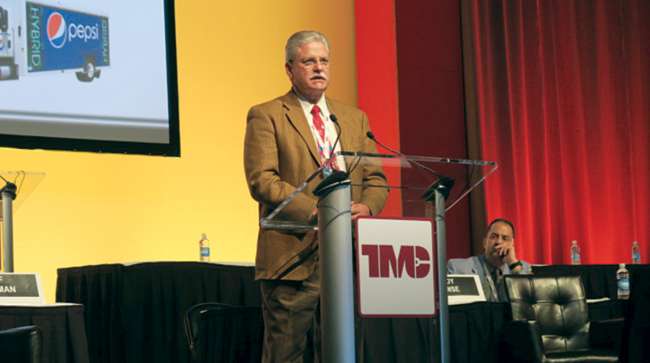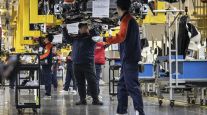Features Editor
Emerging Technology Creates Challenges for Electric Vehicles, PepsiCo Exec. Says

ATLANTA — Electric vehicles will have a large role in trucking’s future, but there are challenges, including emerging technology, said a PepsiCo Inc. fleet executive.
“Electric will continue to play a bigger and bigger part of the future for sure because it’s more efficient,” said Jim Johnston, fleet reliability manager with PepsiCo. “Internal combustion engines are only a third efficient. Electric is more efficient but you got to look at the whole picture.”
Johnston, a panelist at a March 7 session on heavy-duty vehicle electrification at the Technology & Maintenance Council’s annual meeting here, spoke with Transport Topics after the event.
About 10% of PepsiCo’s fleet is either plug-in electric or electric hybrid, Johnston said. At its Pepsi division, this includes Class 6 and 7 hybrid trucks/tractors and Class 2 hybrid vans/pickups, according to a slide from his presentation. At its Frito Lay division, this includes Class 6 plug-in electric straight trucks.
Johnston said the company’s experience overall with electric vehicles “has been positive for the technician.” However, “the challenges have been emerging technology and making sure that we remain current with our diagnostic software, training and configuration of the vehicle.”
He also stressed that trucks run on software. “The modern vehicle is no better or worse than the software that is controlling it. Consequently, if a technician has a truck with a problem and they pull it in the shop and the first thing they do is go grab their wrenches and open the tool box, they went the wrong direction. They need to go get the laptop and plug in to the truck,” Johnston said.
For fleet managers, one of the maintenance drawbacks with plug-in electrics is charging, Johnston said. “You either got to buy diesel fuel or buy electric,” he said. “Typically, the fleet manager doesn’t have to maintain the fuel pump.”
However, with plug-in, because a high-voltage charging system is added to the vehicle, “you’re maintaining both the vehicle and a charging system,” he said. “You got to plug it into the wall, so now you have to maintain the wall because that’s now your fuel pump.”
He also provided advice to fleet managers when it comes to electric vehicles: “Make sure that you have a diagnostic program that you can put into the hands of your technicians so they can do their job.”




